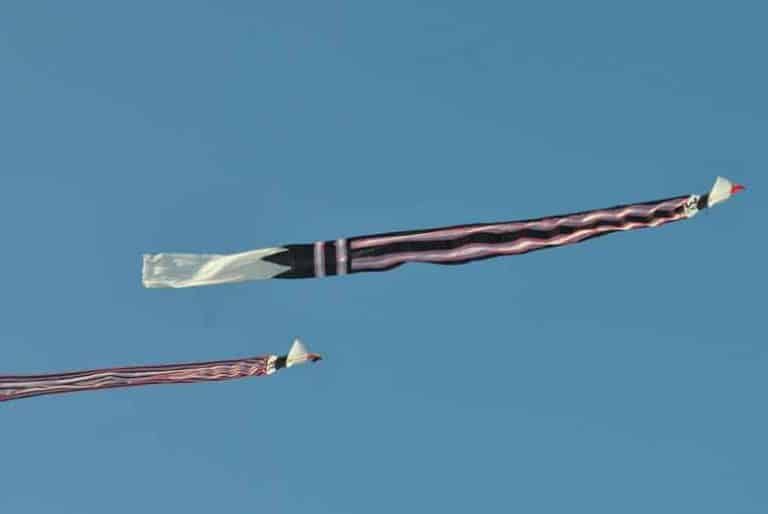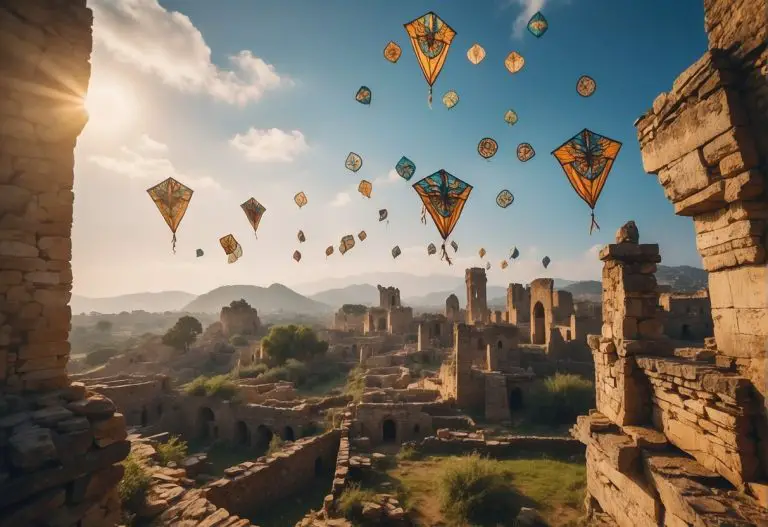What Does Flying A Kite Symbolize?
Kite flying is an activity that has basically existed as long as humans have started to dream about learning how to fly. Let us explore how humans have utilized the kite and its implications to society. In this article, let us go through three key points, from the tactical kite to the ceremonial kite and even the kite of innovation.
Kite flying symbolizes many things. There are many perspectives to this: from a technological or historical standpoint and even a literary viewpoint. In some cultures, kite flying was meant as a way to enjoy the sun.
By looking at this from different perspectives, we can understand the significance of kite flying historically, in the present, and maybe even in the future. We will explore why kite flying is such a beloved historical activity that still holds significance today.
An Oriental Glory: A Journey Throughout The History Of The Kite (An Exploration Of The Kite And Its Cultural Symbolism In The East)
Not many consider kite flying an old tradition, but the reality is that kite flying has been said to be around for at least 2300 years. Understanding the history of kite flying helps us get a better grasp of what kite flying symbolizes.
The Symbolism Of Kite And Kite Flying
- The Kite As A Weapon Of War
- Kite Flying As A Religious Celebration
- The Kite As A Symbol For Innovation
A Weapon Of War: China’s Story Of Weaponizing The Kite
It is pretty unclear as to where kite flying originated, as there are some conflicting records when it comes to its origins. Some scholars have pointed out its roots in Southeast Asia, in the countries of Indonesia and Malaysia.
However, one of the most circumstantial pieces of evidence points out the kites’ origin to the sleeping dragon of the east themselves, China.
One of the earliest references to kite flying comes from the philosopher Mo-tse in 450 BC, and the earliest written references even date back to 200 BC in China. Back then, the kite served and symbolized a different purpose. (source)
Unexpectedly, the earliest records of the usage of the kite were in its use for combat. Who would have known that the kite we use and enjoy today would have been used as a weapon of war? Although it was not used as a weapon for offense, Chinese General Han Hsin of the Han Dynasty used the kite as a measuring tool by flying it over the city walls to determine how far his army would need to tunnel to pass through the city’s defenses. (source)
The answer to what kite flying symbolizes lies in its historical use as a strategic weapon of war (in a historical perspective, of course). As time went on, the symbolism of kites also shifted as it moved past the sleeping dragon and was introduced to neighboring India.
A Festive Reprise: The Story Of India And The Kite
China’s symbolism of kite flying as an intelligent tactical weapon is indeed interesting, how an object for playing (primarily for kids) was utilized as a method of intricate war planning. However, as kite-flying activity has spread outside of China to its neighbors, its reputation also changed.
When it reached India, it was now used more similarly to its modern uses.
As a very religious Hindu country, India celebrates many celebrations and festivals, especially since they have a lot of gods to worship; at around 33 million gods and goddesses, India has a 1 to 46 ratio with its population and its number of deities. It means that there is one god for every 46 people. It makes it that they have a lot (and I mean a lot) of festivals to celebrate. (source)
As a unique country with a unique culture, India has a different interpretation and symbolism of kite flying, and kite flying has a different meaning to them. It is exemplified by one of its festivals, the Makar Sankranti festival.
For those not acquainted with the Makar Sankranti festival, it is a festival commemorated in honor of the sun god. It is a festival celebrated as a manifestation of the end of the winter season and the start of the harvest period. What better way to honor the sun god than to enjoy the sun outside? (source)
One of the essential activities during the Makar Sankranti festival is to go outside and enjoy the sun, and the most common way they do this is to fly kites out. It is the reason why the Makar Sankranti festival is essentially synonymous with a kite-flying celebration. Kite flying in India symbolizes their celebration of the sun god and the appreciation of the sun outside.
As we continue with our discussion regarding the symbolism of kite and kite flying, we move further into modern society and the perspectives of kite flying. Let us look into kite flying and understand its symbolism in technology and innovation.
A Source Of Innovation: Why Kites Symbolize The Gift Of Flight
We have looked at kite flying and its symbolism concerning culture and history with the last two discussions. However, we have yet to look at the symbolism of kite flying and its power to transform how we live today.
Is kite flying just a method of playing, a weapon of war, or a celebration of culture? Sure, we have talked about these symbolisms of the kite previously, but is that all there is to kite flying? What if I tell you that kite and kite flying has turned a potential future into reality, as to which that reality is the present– the symbol of shifting the far future into today?
What Do You Call Someone Who Flies A Kite? A Pilot.
One of the first questions I asked myself when I first got into kites was, what do you call kite enthusiasts? People, who are kite hobbyists, people who fly kites? Well, they are called a pilot.
Of course, after asking the question “what,” I was left with the question “why?” Why were people who flew kites called pilots? Aside from explaining the Greek origin (the origin for the word pilot comes from the Greek word meaning oar), there is another reason why pilots are called pilots. (source)
The inventors of the airplane, the Wright brothers, were avid kite flyers, and from there started their dream of flying. While flying a box of kites, the Wright brothers discovered how the lift in kite flying was strong enough to lift a man. (source)
It was when their first vision of the plane started. Today, the large kite the Wright brothers were building has now amalgamated into the modern airplane.
Frequently Asked Questions
- What Are The Other Purposes Of Kites?
The kites of today, aside from being used for outdoor activity purposes, are now being used for meteorological reasons also known as studying the weather.
- Were Kites An Instrument For A Scientific Breakthrough?
Benjamin Franklin used a kite to establish a relationship between lightning and electricity.
- Is Kite Flying A Sport?
Yes, it is. Kity flying is an aerial sport where contestants gather and compete with others. The goal of this sport is to fly a kite in tune with the music that is being played at the competition. The kite pilots will have a choreographed routine and fly their kites in man different patterns and moves.
Sources
- “History Of Ancient Toilets In Greece,” Toiletology, Last Accessed October 22, 2021. https://toiletology.com/resources/history/history-of-toilets-in-ancient-greece/
- “History Of Kites,” Kite.org, Last Accessed October 21, 2021. https://www.kite.org/about-kites/history-of-kites/
- “Makar Sankranti 2020: Kite flying is an important aspect of the celebrations, here’s why”, Hindustan Times, January 15, 2020, Last Accessed October 22, 2021, https://www.hindustantimes.com/more-lifestyle/happy-makar-sankranti-2020-here-s-why-kite-flying-is-an-important-aspect-of-the-celebration/story-UfVRTwCI6qxr9l9ErV505L.html
- “Shikha Goyal, Why is Makar Sankranti celebrated?” Jagran Josh, January 13, 2021, Last Accessed October 22, 2021, https://www.jagranjosh.com/general-knowledge/makar-sankranti-1389613751-1





